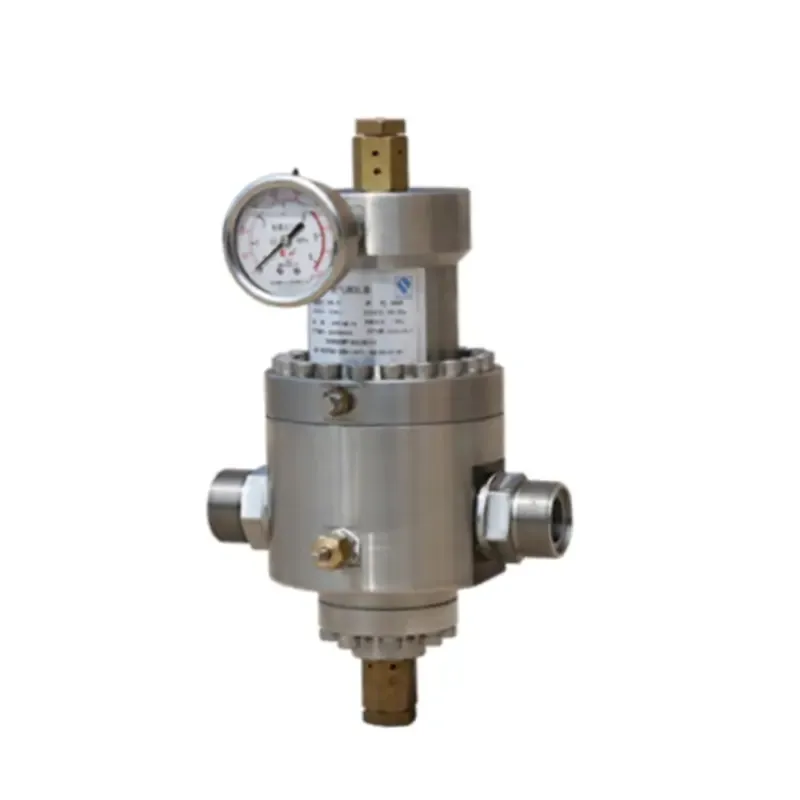
7 月 . 22, 2024 00:55
Back to list
Natural Gas Pressure Regulation Systems for Optimal Energy Management and Efficiency Improvement
Understanding Natural Gas Pressure Regulators
Natural gas plays a vital role in the energy landscape, providing heating, cooking fuel, and electricity generation. However, the efficient and safe delivery of natural gas relies heavily on various components within the distribution system, among which pressure regulators are critical. This article explores the significance of natural gas pressure regulators, their functions, types, and importance in ensuring reliable gas supply.
What is a Natural Gas Pressure Regulator?
A natural gas pressure regulator is a device that reduces and stabilizes the pressure of natural gas before it enters a pipeline or a gas appliance. Without these regulators, the high pressure from gas supply lines could cause damage to appliances or create unsafe conditions. Regulators are essential in both residential and commercial settings, ensuring that the gas delivered is at the appropriate pressure for various applications.
How Do Pressure Regulators Work?
Pressure regulators operate by maintaining a constant outlet pressure despite fluctuations in inlet pressure or flow rate. They achieve this through a mechanical system that usually involves a diaphragm, spring, and valve. When gas flows into the regulator, the diaphragm moves in response to the pressure. If the outlet pressure exceeds the set point, the diaphragm closes the valve, restricting gas flow until the pressure falls to the desired level. This simple yet effective mechanism ensures a consistent supply of gas while protecting equipment from potential damage due to pressure surges.
Types of Natural Gas Pressure Regulators
.
1. First-Stage Regulators These are used right after the source of natural gas, such as a gas main, to reduce the high pressure from transmission pipelines to a more manageable level for distribution. They can handle high flow rates and pressure, making them suitable for industrial applications.
منظم ضغط الغاز الطبيعي

2. Second-Stage Regulators These are typically used in residential or commercial systems. They further reduce the pressure from the first-stage regulator to a safe level suitable for appliances like stoves and heaters. They usually operate at lower flow rates compared to first-stage regulators.
Importance of Pressure Regulators
The importance of natural gas pressure regulators cannot be overstated. Here are several key reasons why they are crucial
- Safety By regulating the pressure of natural gas, these devices help prevent dangerous leaks and explosions that can occur if pressure is too high. Proper regulation ensures that appliances operate within their specified pressure limits.
- Efficiency Regulating pressure helps maintain the operational efficiency of gas appliances. When appliances function within the designed pressure range, they work more efficiently, leading to cost savings on energy bills.
- Compliance Many regions have stringent regulations regarding gas supply systems to ensure safety. Proper installation and maintenance of pressure regulators are often part of compliance with these safety standards.
- Longevity of Equipment Consistent pressure levels contribute to the longevity of gas appliances. Overpressure can cause wear and tear, leading to premature failures and costly repairs.
Conclusion
Natural gas pressure regulators are an indispensable component of the natural gas distribution system. They play a critical role in ensuring safety, efficiency, and the longevity of appliances that rely on natural gas. Understanding their function and importance can help consumers appreciate the technology that supports their daily energy needs and highlight the importance of regular maintenance and proper usage of these regulators. By doing so, we can ensure a reliable and safe natural gas supply, safeguarding both people and property.
Latest news
-
Unlocking The Quality Gas Pressure ReducersNewsNov.01,2024
-
The Role of Gas Pressure Reducing StationsNewsNov.01,2024
-
The Importance and Functionality of Safety Relief ValvesNewsNov.01,2024
-
The Essential Role of Safety Valves in Natural Gas ApplicationsNewsNov.01,2024
-
The Essential Role of Gas Pressure RegulatorsNewsNov.01,2024
-
Enhance Your Premium Gas FiltersNewsNov.01,2024

